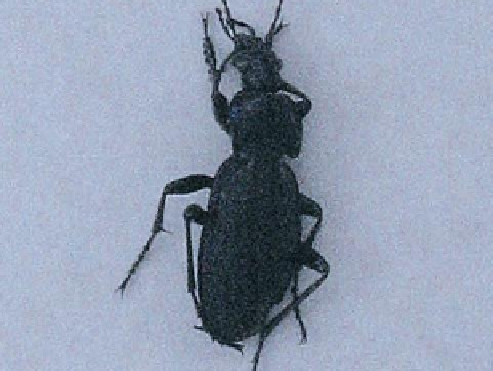Agriculture Reference
In-Depth Information
(a)
(b)
(c)
16
(d)
Figure 16.8
(a) Ladybird adult; (b) ladybird eggs; (c)
ladybird larva; (d) ladybird pupa; (e) ground beetle is a
predator on soil borne pests
(e)
An understanding of each pest's and each biological
control organism's life cycle is needed to ensure
success in control. Several specialist firms have
contracts to apply biological control organisms
to greenhouse units in both the outdoor and the
glasshouse situation.
There are more than fifty biological control species
(available from
specialist companies
) that are
used against garden and glasshouse pests such as
aphid, caterpillars, flea beetle, glasshouse whitefly,
leaf miners, mealy bugs, two-spotted mite, fungus
gnat, thrips, vine weevil and slugs. These have been
selected for their effectiveness against their chosen
pest species. Also, they have been tested to ensure
they do not interfere with the natural balances in the
garden/local habitat.
Chemical control
Chemical control
is the use of a chemical
substance intended to prevent or kill a
destructive weed, pest or disease.
The number of pesticides available to gardeners has
decreased in recent years, reflecting the need to
use only products that are safe to humans, pets and
wildlife.
Benefits of chemical control:
X
Chemical control produces rapid control.
X
Products are easily accessible.







